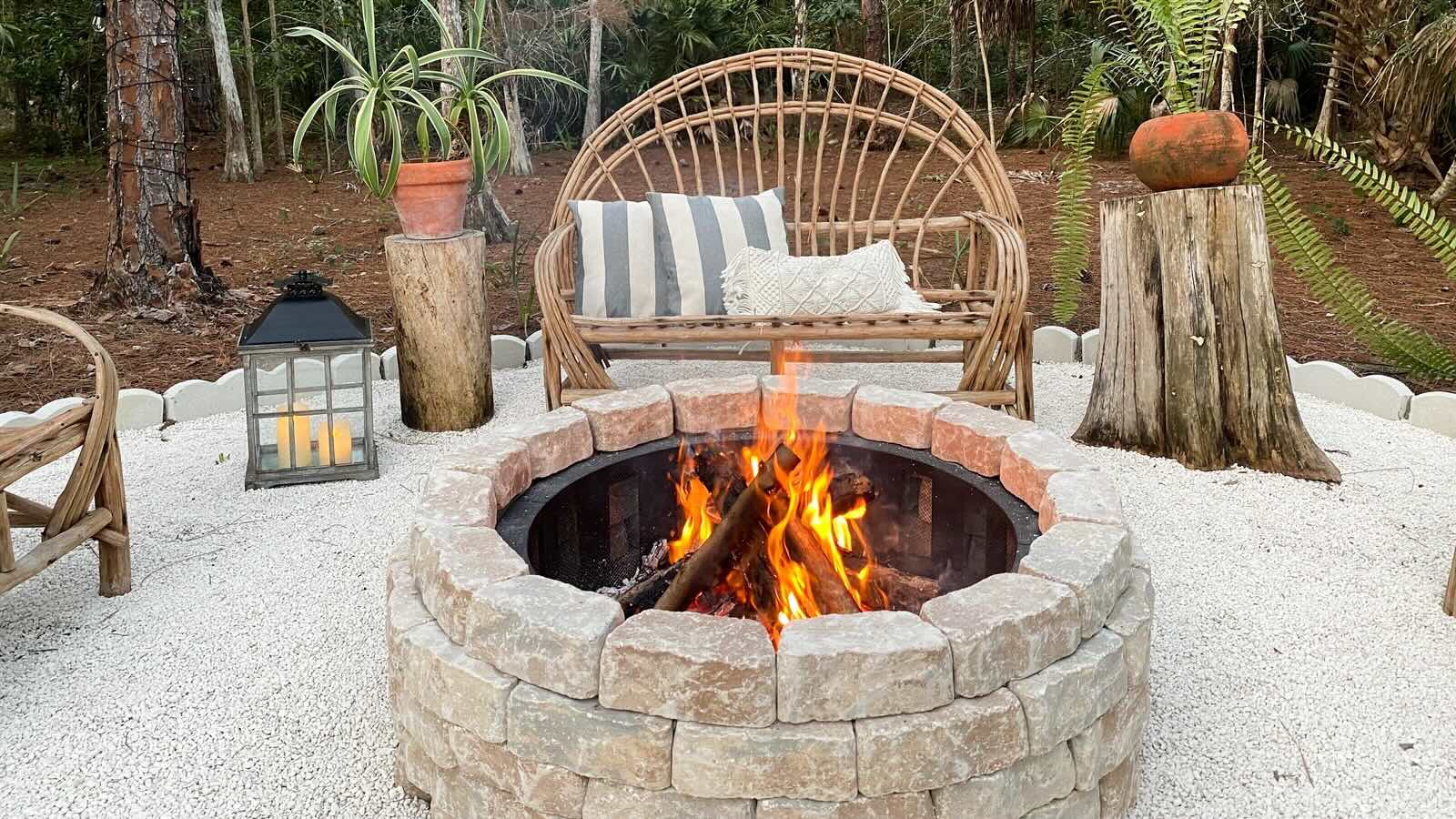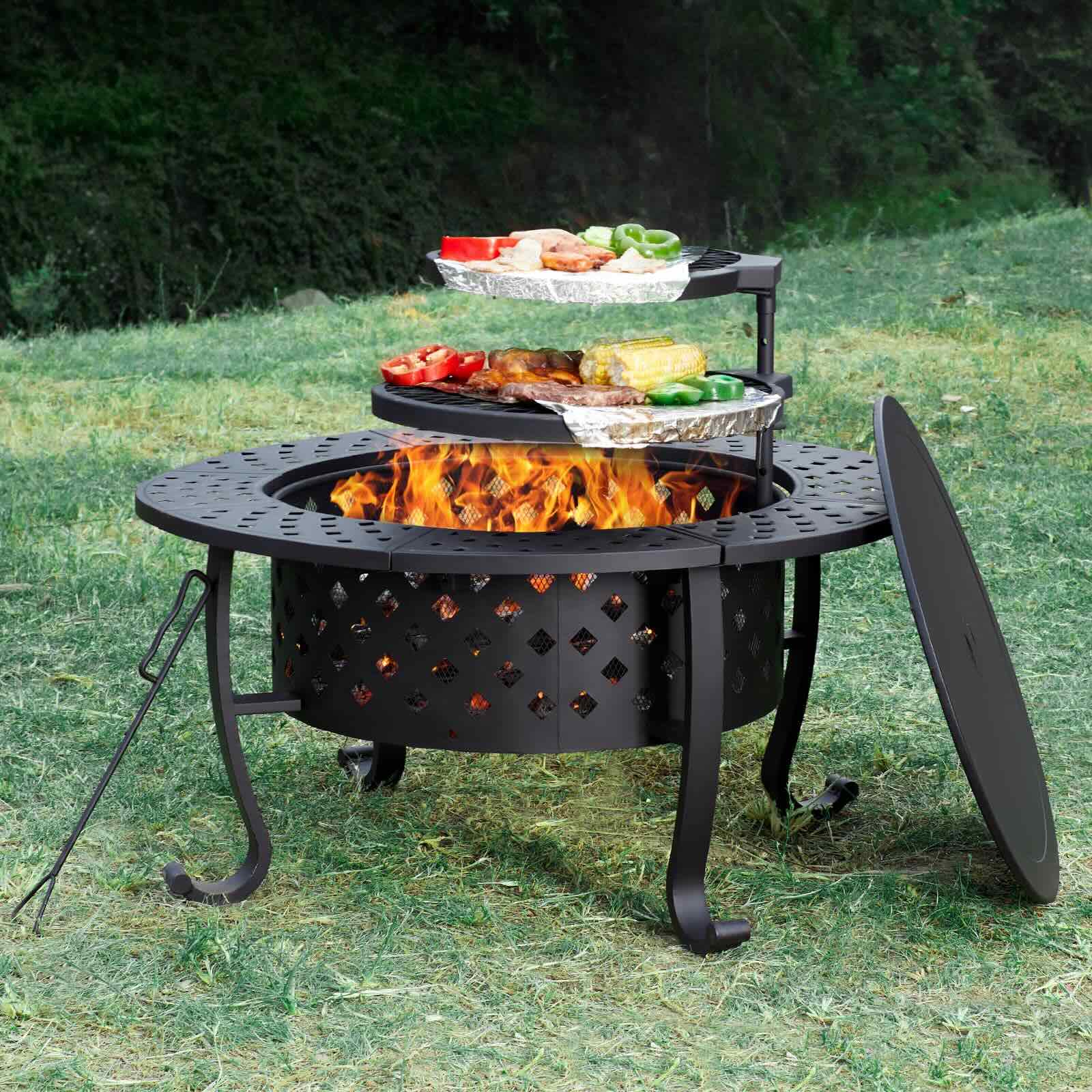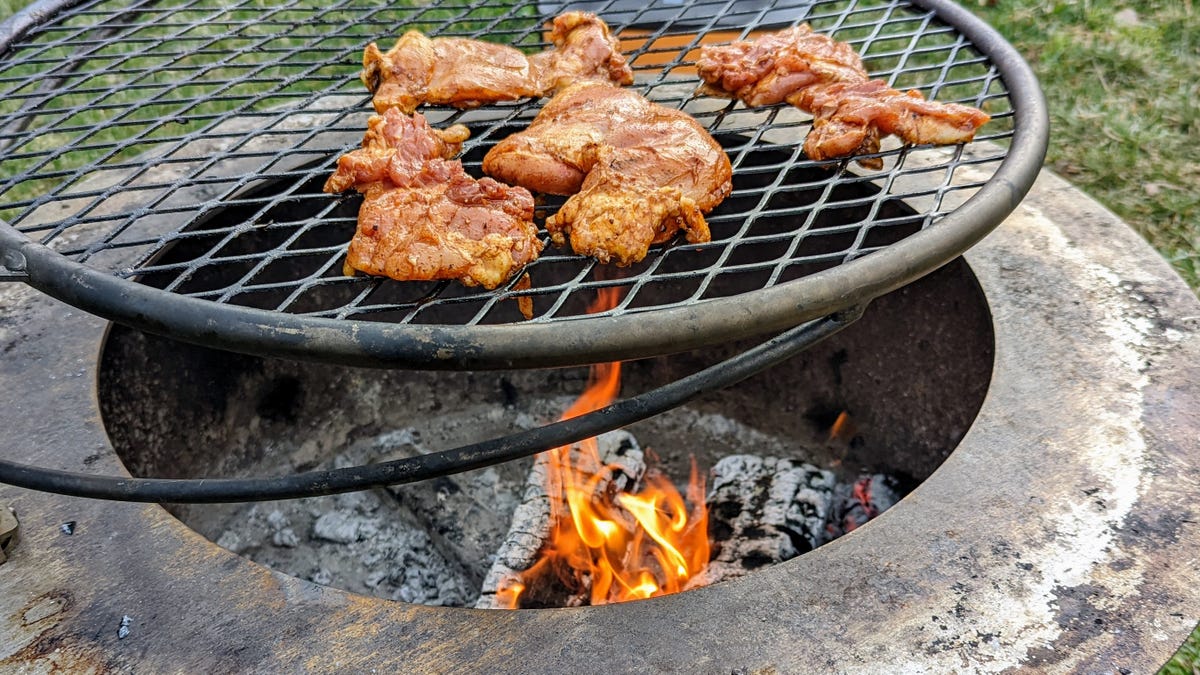Home>Gardening & Outdoor>Outdoor Entertaining>How To Roast A Pig In A Fire Pit


Outdoor Entertaining
How To Roast A Pig In A Fire Pit
Modified: August 17, 2024
Discover the ultimate guide to roasting a pig in a fire pit for your next outdoor entertaining event. Learn the best tips and techniques for a delicious and memorable feast.
(Many of the links in this article redirect to a specific reviewed product. Your purchase of these products through affiliate links helps to generate commission for Storables.com, at no extra cost. Learn more)
Introduction
Welcome to the ultimate guide on how to roast a pig in a fire pit! There's something truly special about the primal art of roasting a whole pig over an open flame. It's a time-honored tradition that has been bringing people together for centuries, creating unforgettable experiences and mouthwatering meals.
Roasting a pig in a fire pit is more than just a method of cooking – it's a celebration of food, friends, and the great outdoors. The process itself is a labor of love, requiring patience, skill, and a deep appreciation for the culinary arts. Whether you're hosting a backyard luau, a family reunion, or a festive gathering with friends, roasting a pig in a fire pit is sure to be the centerpiece of a memorable event.
In this comprehensive guide, we'll walk you through every step of the process, from choosing the right pig to carving and serving the finished masterpiece. You'll learn about the importance of selecting the perfect pig, preparing the fire pit for the roasting process, seasoning and preparing the pig for cooking, the art of roasting the pig to perfection, and finally, the rewarding experience of carving and serving the succulent, smoky meat.
So, roll up your sleeves, gather your friends and family, and get ready to embark on a culinary adventure that will leave a lasting impression. It's time to fire up the pit, savor the aroma of wood smoke, and indulge in the rich flavors of a perfectly roasted pig. Let's dive into the art of roasting a pig in a fire pit and create unforgettable memories around the primal act of cooking over an open flame.
Key Takeaways:
- Roasting a pig in a fire pit is a special tradition that brings people together for a memorable outdoor feast, requiring careful pig selection, fire pit preparation, and patience during the roasting process.
- The art of carving and serving the roasted pig is a celebratory occasion that enhances the communal dining experience, creating lasting memories of conviviality and culinary triumph.
Read more: How To Fire Clay In A Fire Pit
Choosing the Right Pig
When it comes to roasting a pig in a fire pit, selecting the right pig is the crucial first step in ensuring a successful and delicious outcome. The size and quality of the pig will greatly influence the roasting process and the overall flavor of the meat. Here are some essential factors to consider when choosing the perfect pig for your fire pit feast:
- Size Matters: The size of the pig you choose will depend on the number of guests you plan to serve. A general rule of thumb is to estimate about 1 to 1.5 pounds of pig per person. For example, a 50-pound pig can comfortably feed around 35 to 50 people, depending on the accompaniments and appetites of your guests.
- Quality and Freshness: It’s crucial to source a high-quality, fresh pig from a reputable butcher or farm. Look for a pig with firm, pink flesh, and a clean, pleasant aroma. A fresh pig will yield superior flavor and texture, elevating the entire roasting experience.
- Skin and Fat Content: The ideal pig for roasting should have a good layer of fat under the skin, which not only adds flavor and moisture to the meat but also helps protect it from drying out during the roasting process. Crispy, golden skin is a hallmark of a well-roasted pig, so selecting a pig with healthy, unblemished skin is essential.
- Sourcing the Pig: Depending on your location, you may be able to find a suitable pig at a local farm, specialty butcher, or through a reputable supplier. It’s advisable to discuss your specific needs with the supplier, as they can often provide valuable guidance on selecting the right pig for your roasting event.
By taking the time to carefully consider these factors and select a pig that meets your requirements, you’ll set the stage for a successful and memorable pig roast. The right pig will serve as the centerpiece of your gathering, captivating guests with its aroma, flavor, and the communal spirit of sharing a time-honored feast.
Preparing the Fire Pit
Before you embark on the exhilarating journey of roasting a pig in a fire pit, it’s essential to prepare the roasting environment to ensure optimal cooking conditions and a safe, enjoyable experience for all involved. Here’s a step-by-step guide to preparing the fire pit for the upcoming culinary adventure:
- Choosing the Right Location: Select a suitable location for your fire pit, ensuring it complies with local regulations and safety guidelines. Ideally, the area should be well-ventilated, away from any overhanging branches or flammable structures, and provide ample space for maneuvering around the fire.
- Building the Fire Pit: If you don’t already have a fire pit, consider constructing one using bricks, stones, or a purpose-built metal fire pit. Ensure the pit is large enough to accommodate the pig and allows for proper airflow to maintain a consistent cooking temperature.
- Firewood Selection: Choose seasoned hardwoods such as oak, hickory, or fruitwoods for your fire. These woods impart a delightful smoky flavor to the pig while providing steady, even heat for the duration of the roasting process.
- Lighting the Fire: Build a sturdy fire in the pit, allowing ample time for the wood to burn down to hot embers. This process may take a few hours, so plan accordingly. Once the wood has burned down, spread the embers evenly across the base of the pit to create a consistent heat source for roasting.
- Adjusting the Heat: Depending on the size of the pig and the cooking time required, you may need to adjust the position of the embers to regulate the heat. Use a long-handled shovel or rake to spread or concentrate the embers as needed, ensuring an even and steady cooking temperature throughout the roasting process.
- Ensuring Safety: Prioritize safety by keeping a fire extinguisher, water source, and first-aid kit nearby. It’s also advisable to have a designated individual responsible for fire management and safety throughout the roasting event.
By meticulously preparing the fire pit, you’ll create an inviting and functional space for the captivating spectacle of roasting a whole pig. The crackling flames, the enticing aroma of wood smoke, and the anticipation of a sumptuous feast will set the stage for an unforgettable outdoor culinary experience.
Seasoning and Preparing the Pig
Once you’ve chosen the perfect pig and prepared the fire pit, the next crucial step in the journey of roasting a pig in a fire pit is seasoning and preparing the pig for the cooking process. This step is where you infuse the meat with flavor and set the stage for a succulent, aromatic outcome. Here’s a detailed guide to seasoning and preparing the pig to elevate its natural flavors and ensure a delectable end result:
- Cleaning and Trimming: Thoroughly clean the pig, inside and out, using cold water and a mild detergent. Remove any remaining hairs, and trim off excess fat, as well as any organs or glands that were not removed during butchering.
- Scoring the Skin: Using a sharp knife or a razor, score the skin of the pig in a crosshatch pattern. This process helps the fat render and the skin to crisp up during roasting, resulting in a delectable, crackling finish.
- Seasoning the Interior: Generously season the cavity of the pig with a blend of salt, pepper, and aromatic herbs such as rosemary, thyme, and sage. This step infuses the meat with a depth of flavor from the inside out, enhancing its natural richness.
- Seasoning the Exterior: Rub the exterior of the pig with a flavorful marinade or dry rub, incorporating spices, herbs, and aromatics of your choice. Common ingredients include garlic, paprika, cumin, and citrus zest, creating a tantalizing crust and layers of complex flavors.
- Trussing the Pig: Secure the pig’s limbs and shape it into a compact form for even cooking. Trussing helps maintain the pig’s shape, promotes uniform roasting, and ensures that the flavorful juices are distributed evenly throughout the meat.
- Marinating Time: Allow the seasoned pig to marinate for several hours or overnight in the refrigerator. This period allows the flavors to permeate the meat, resulting in a more pronounced and harmonious taste profile.
By meticulously seasoning and preparing the pig, you’ll lay the foundation for a culinary masterpiece that embodies the essence of outdoor feasting. The aromatic blend of herbs and spices, the glistening skin, and the promise of tender, flavorful meat will captivate the senses and set the stage for an extraordinary roasting experience.
Make sure to properly season the pig with salt, pepper, and any other desired spices before roasting. This will enhance the flavor and ensure a delicious end result.
Roasting the Pig
As the fire crackles and the aroma of seasoned wood fills the air, it’s time to embark on the exhilarating journey of roasting the pig in the fire pit. This stage is where patience, attention to detail, and a deep connection to the primal art of cooking over an open flame come into play. Here’s a comprehensive guide to roasting the pig to perfection, ensuring that every moment of the process contributes to a tantalizing and unforgettable culinary experience:
- Positioning the Pig: Carefully place the seasoned and trussed pig on a sturdy roasting spit or in a secure wire-mesh cage, ensuring that it is balanced and centered over the fire. The pig should be positioned at a height that allows it to cook evenly and receive the optimal amount of heat from the embers below.
- Monitoring the Heat: Throughout the roasting process, it’s essential to monitor the heat of the fire and make adjustments as needed to maintain a consistent temperature. The goal is to achieve a slow, steady roast, allowing the pig to cook through evenly while developing a crispy, golden-brown skin.
- Basting and Moisture Management: Regularly baste the pig with a flavorful mixture of oil, citrus juices, and aromatics to keep the meat moist and enhance its flavors. Additionally, consider placing a drip pan beneath the pig to catch the rendered fat, preventing flare-ups and maintaining a clean cooking environment.
- Patience and Perseverance: Roasting a pig is a labor of love that requires time and dedication. Depending on the size of the pig and the heat of the fire, the roasting process can take several hours. Embrace the rhythm of the fire, savor the anticipation, and revel in the communal experience of tending to the roasting pig.
- Testing for Doneness: As the pig nears completion, use a meat thermometer to ensure that the internal temperature reaches a safe level for consumption. The meat should be tender and juicy, with the skin crisp and crackling. This stage marks the culmination of the roasting process and sets the stage for the grand reveal.
As the pig slowly transforms over the open flame, the air filled with mouthwatering aromas and the crackling of the fire, a sense of anticipation and camaraderie permeates the atmosphere. The art of roasting a pig in a fire pit is a testament to the timeless tradition of outdoor feasting, bringing people together to savor the rewards of patience, skill, and the primal allure of cooking over an open flame.
Read more: What To Cook In A Fire Pit
Carving and Serving the Pig
As the moment of culinary triumph approaches, and the succulent aroma of the roasted pig fills the air, it’s time to transition from the roasting process to the art of carving and serving the centerpiece of your outdoor feast. This stage is where the culmination of your efforts is unveiled, and the communal spirit of sharing a sumptuous meal takes center stage. Here’s a detailed guide to carving and serving the roasted pig with finesse and flair, ensuring that every slice and presentation embodies the essence of a memorable outdoor dining experience:
- Resting Period: Once the pig has been removed from the fire, allow it to rest for a brief period to allow the juices to redistribute and the meat to relax. This step enhances the tenderness and juiciness of the meat, ensuring a more enjoyable dining experience.
- Carving Technique: Using a sharp carving knife and sturdy cutting board, begin the carving process by carefully separating the legs, shoulders, and other sections of the pig. Work methodically, following the natural contours of the meat, and aim to achieve uniform slices that showcase the succulent texture and aromatic flavors.
- Presentation and Garnishes: Arrange the carved pig on a large serving platter or directly on the dining table, creating an inviting display that beckons guests to indulge in the smoky, tender meat. Consider garnishing the platter with fresh herbs, citrus wedges, and vibrant vegetables to add a pop of color and freshness to the presentation.
- Communal Experience: Embrace the communal spirit of outdoor dining by inviting guests to gather around the serving platter, encouraging them to savor the flavors and textures of the roasted pig together. This shared experience fosters a sense of camaraderie and conviviality, elevating the meal from sustenance to a cherished memory.
- Accompaniments and Sides: Complement the star of the show with an array of thoughtfully chosen sides and condiments, such as fresh salads, grilled vegetables, artisan bread, and flavorful sauces. These accompaniments enhance the overall dining experience, offering a variety of textures and flavors to complement the rich, smoky essence of the roasted pig.
- Celebrating the Culinary Triumph: As guests savor each delectable bite, take a moment to revel in the satisfaction of a successful pig roast. The shared enjoyment of the meal, the lively conversations, and the sense of fulfillment encapsulate the essence of outdoor entertaining and the timeless tradition of feasting on the fruits of your labor.
By approaching the carving and serving of the roasted pig with precision and a spirit of conviviality, you’ll elevate the dining experience to a celebratory occasion that lingers in the memories of all who partake. The art of carving and serving the roasted pig is a culmination of the communal spirit, culinary craftsmanship, and the joy of sharing a remarkable outdoor feast.
Conclusion
Roasting a pig in a fire pit is far more than a culinary endeavor – it’s a celebration of tradition, camaraderie, and the primal art of cooking over an open flame. From the moment the fire is kindled to the grand unveiling of the succulent, smoky meat, the entire process is a testament to the timeless allure of outdoor feasting and the joy of sharing a memorable meal with friends and family.
Throughout this comprehensive guide, we’ve delved into the intricate steps of roasting a pig in a fire pit, from choosing the perfect pig and preparing the fire pit to seasoning, roasting, and ultimately carving and serving the prized centerpiece. Each stage of the journey embodies the essence of outdoor entertaining, fostering a sense of connection to nature, tradition, and the rich flavors that emerge from the primal act of cooking over an open flame.
As the fire crackles and the aroma of wood smoke fills the air, the experience of roasting a pig in a fire pit transcends mere sustenance, becoming a vibrant tapestry of sensory delights and shared moments of conviviality. The tantalizing flavors, the communal spirit, and the sense of accomplishment that accompanies a successful pig roast create indelible memories that linger long after the last savory bite has been savored.
So, whether you’re planning a festive gathering, a backyard luau, or a memorable outdoor feast, consider the time-honored tradition of roasting a pig in a fire pit. Embrace the process with enthusiasm, patience, and a spirit of conviviality, and relish in the rewarding experience of bringing people together to savor the fruits of your labor around the primal allure of a perfectly roasted pig.
In the end, roasting a pig in a fire pit is more than a meal – it’s a captivating journey that celebrates the art of outdoor entertaining, the joy of shared experiences, and the timeless tradition of feasting on the bounty of the earth in the company of those we cherish.
Frequently Asked Questions about How To Roast A Pig In A Fire Pit
Was this page helpful?
At Storables.com, we guarantee accurate and reliable information. Our content, validated by Expert Board Contributors, is crafted following stringent Editorial Policies. We're committed to providing you with well-researched, expert-backed insights for all your informational needs.















0 thoughts on “How To Roast A Pig In A Fire Pit”